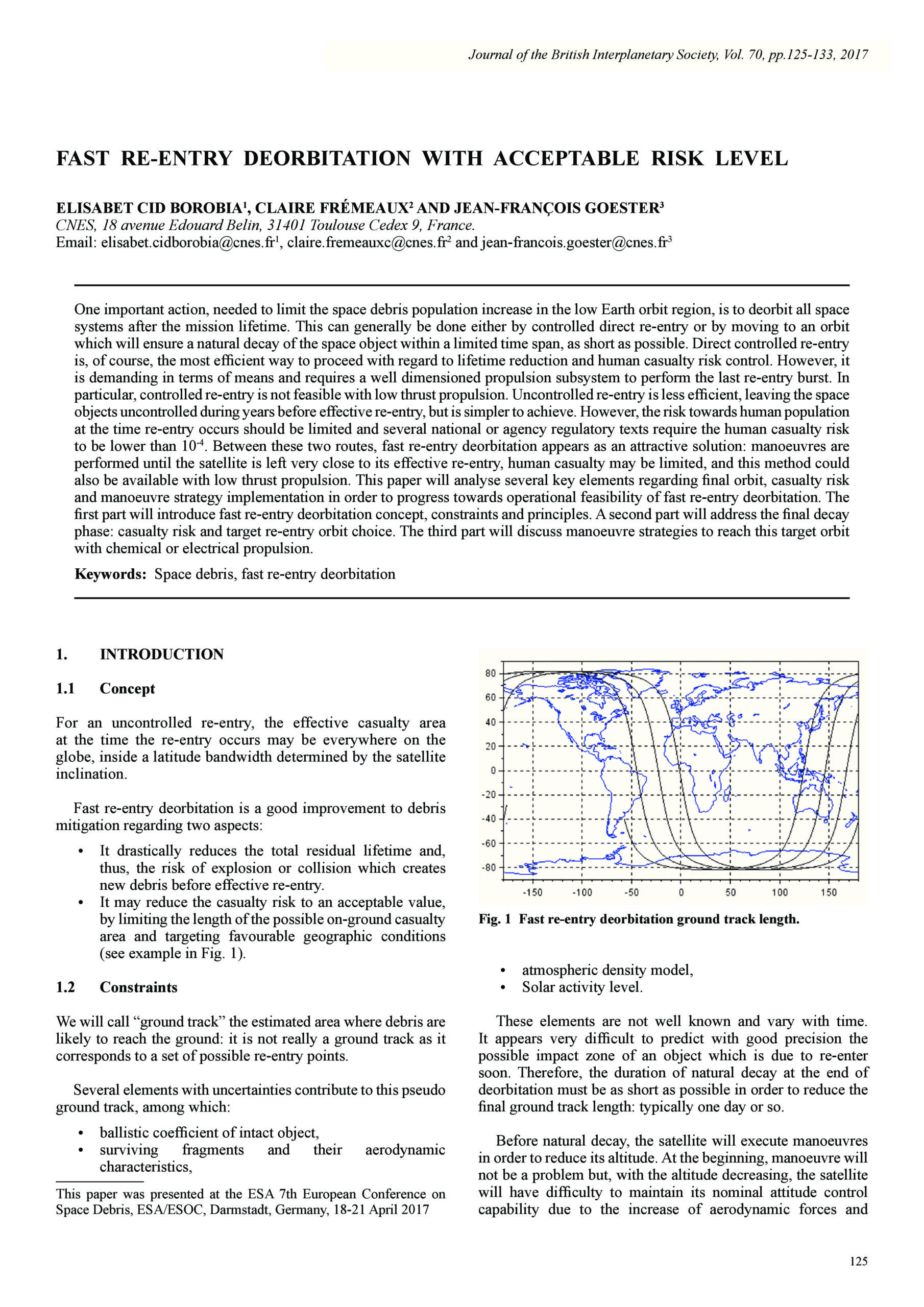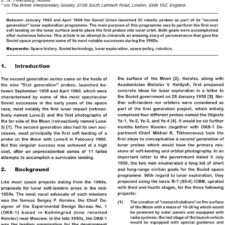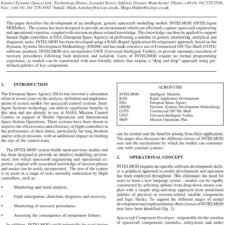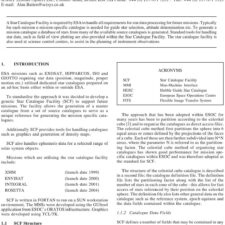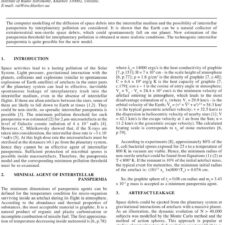Fast Re-entry Deorbitation with Acceptable Risk Level
£5.00
E. Cid Borobia et al. (2017), JBIS, 70, pp.125-133
Refcode: 2017.70.125
Abstract:
One important action, needed to limit the space debris population increase in the low Earth orbit region, is to deorbit all space systems after the mission lifetime. This can generally be done either by controlled direct re-entry or by moving to an orbit which will ensure a natural decay of the space object within a limited time span, as short as possible. Direct controlled re-entry is, of course, the most efficient way to proceed with regard to lifetime reduction and human casualty risk control. However, it is demanding in terms of means and requires a well dimensioned propulsion subsystem to perform the last re-entry burst. In particular, controlled re-entry is not feasible with low thrust propulsion. Uncontrolled re-entry is less efficient, leaving the space objects uncontrolled during years before effective re-entry, but is simpler to achieve. However, the risk towards human population at the time re-entry occurs should be limited and several national or agency regulatory texts require the human casualty risk to be lower than 10-4. Between these two routes, fast re-entry deorbitation appears as an attractive solution: manoeuvres are performed until the satellite is left very close to its effective re-entry, human casualty may be limited, and this method could also be available with low thrust propulsion. This paper will analyse several key elements regarding final orbit, casualty risk and manoeuvre strategy implementation in order to progress towards operational feasibility of fast re-entry deorbitation. The first part will introduce fast re-entry deorbitation concept, constraints and principles. A second part will address the final decay phase: casualty risk and target re-entry orbit choice. The third part will discuss manoeuvre strategies to reach this target orbit with chemical or electrical propulsion.

